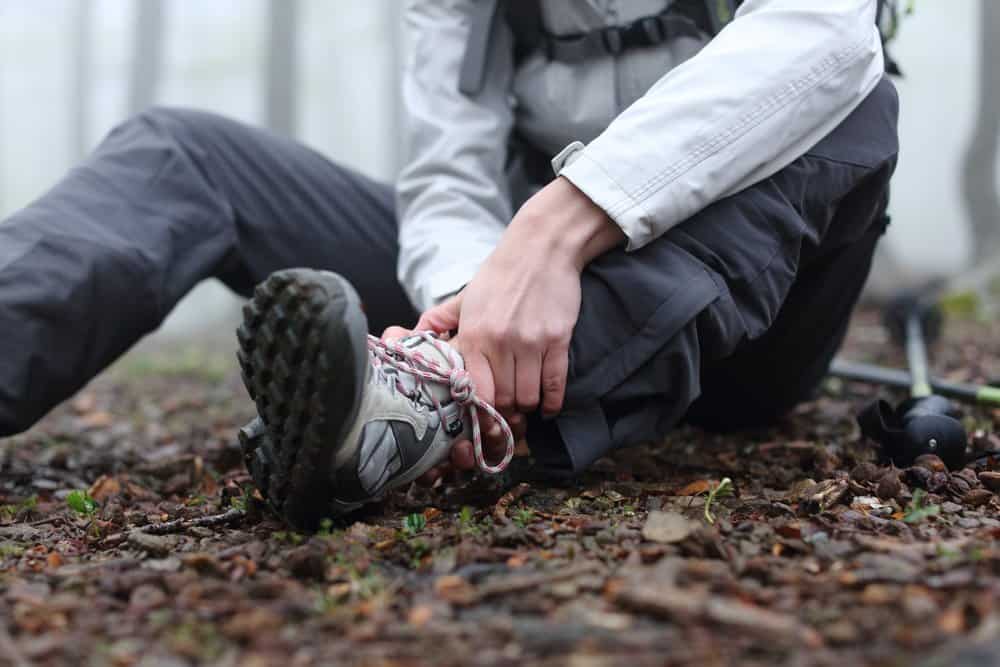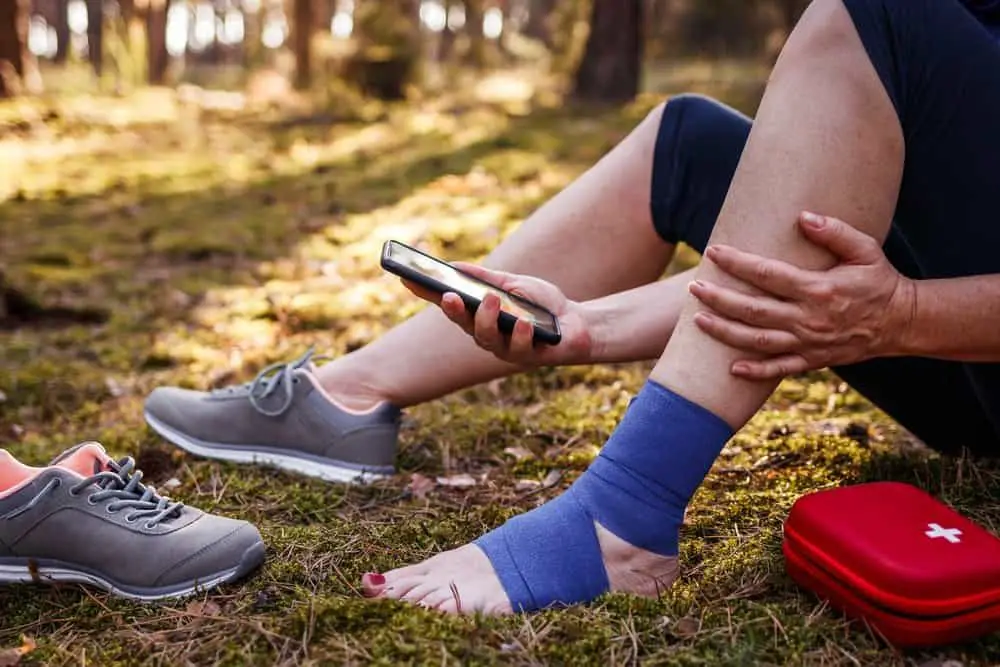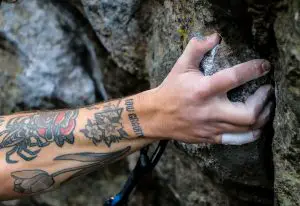Hiking Boots Ankle Support Myth: Debunked

Hiking can bring its own set of physical challenges, so when you do take to the trails, your foundation is everything. However, there seems to be a debate in the hiking community over whether certain hiking tips, such as getting a hiking boot with suitable ankle support, are really all that necessary.
To be completely fair, I’ve trekked more than my fair share of trails with open-toed sandals, and I’ve even hiked in crocs. So what gives?
Quick Links
Do High-Top Ankle Boots Provide Better Ankle Support?
It could be easy to see why the narrative that a high topped hiking shoe may provide more ankle support than a low topped shoe, but does the height of your boot really make a difference in the end?
I’m a big science girl – but scientific studies to support whether this whole ankle supports myth conversation when it comes to hiking are quite limited. There’s no solid, conclusive answer that sways in favor of either side of the argument, however, there is still plenty of information around concerning ankle support and physical activity that can help you come to your own conclusion.
So What Do High-Top Ankle Boots Actually Do?
High-topped hiking boots help to limit ankle movement, which means that when you’re wearing them out on the trail, you’re not using your ankle muscles as much. This can help to stabilize the ankle while traversing about, and also prevent any muscle soreness. In comparison, if you were to opt for a low topped hiking shoe, it’s more likely that you will experience some muscle soreness.
This difference can be sometimes misinterpreted as a lack of ankle support, which may enable some people to believe that high topped boots are better, but this is just a matter of energy exertion and shock absorption rather than a difference in ankle support.
Believe it or not, the soreness that you experience with low-top boots can actually be quite beneficial for you in the long run. When your ankles are sore, it means that you’ve given your ankle a good workout, therefore strengthening them, which can help to prevent any ankle injuries in the future.
The Biomechanics of Ankle Support

Now since there aren’t many studies on ankle support within the hiking community, data from those who participate in equally rigorous physical activity can be taken into consideration when trying to figure out what side of the fence you stand on.
From a strictly biomechanical standpoint, ankle support works. Any type of ankle support makes it far less likely for your foot to be put into a vulnerable position. Wearing high-top shoes when engaging in any rigorous physical activity will definitely help to absorb some of the impact that the ankle may endure.
An athlete who is in a state of training will be less likely to sustain an injury if they opt for a higher top shoe than those who do not. However, when that same logic is applied to those who engage in real-life sports and activities such as hiking, there’s an absence of any substantial difference in the amount of injury one endures.
High-top shoes can in fact help to lessen the effects of ankle stress, but at the same time, when there’s this fixation on the ankle, the knee can tend to absorb more of that stress to compensate.
Lastly, one of the main sentiments that seem to come along when trying to get to the bottom of this ankle support debate is that: hikers should instead turn their focus on making their ankles as strong as possible rather than fixate on the support that they may or may not even need.
Are Hiking Boots For Ankle Support Necessary?
There are some people out there in the hiking world who suggest ditching your hiking boot altogether (not many, but they are out there). I’ve gone hiking without my boots many times, but there are times, of course, when they are absolutely necessary. Let me give you a couple of reasons why you may not need your boots for ankle support while hiking.
Weight
One of the reasons is to lessen the weight you’re carrying on the trail and maximize the amount of energy you have to expend. And yes, hiking boots can be quite dense, with some hiking boots being as heavy as 3 pounds. This excess weight can zap away far more of your energy than if you were to opt for a much lighter trail shoe.
There’s even some science to suggest that taking one pound off of your feet is the equivalent of taking five pounds off of your back. Studies conducted by multiple academic researchers, including the US Army have in fact concluded that weight on the feet is disproportionately more burdensome than weight carried on the back and torso. So if you want more endurance during your hike, consider swapping out your bulky hiking boots for a pair of shoes that will keep you light on your toes.
Blisters
Another reason why you may want to consider ditching your conventional hiking boot is to lessen the occurrence of blisters. There are a few reasons why this happens. First, hiking boots take a little while to break in and as a result, they can rub against your skin and cause blisters.
Second, because hiking boots are generally stiffer than other types of shoes, they don’t provide as much flexibility. This lack of flexibility can actually cause your foot to slide around inside the boot more, which also leads to an increased chance of developing blisters.
Lastly, with the boots often being made of a hard, rigid material that doesn’t offer a lot of room to breathe, your feet are more susceptible to becoming moist – which is the perfect playground for blisters to run amuck.
Cost
This is probably the most obvious reason. A decent pair of hiking boots are just plain expensive.
It’s no secret that hiking boots can really break the bank, especially if you want one that is of a higher quality or one that is from a more well-known brand, like Merrell.
Many seasoned hikers consider the price they pay for their boots a well-justified investment into their hobby, but may sometimes fail to consider the amount of maintenance those expensive boots need to last long on out on the trails.
So is it better to just get a lightweight pair of shoes that require far less maintenance and far less time to break them in? Well, that ultimately depends on who you are as a hiker, and what you see is the best fit for you and your body.
How To Take Care Of Your Ankles While Hiking
To further help you come to your own conclusion, here are some tips on how to best take care of your ankles that are backed by science.
Make sure you’re wearing the proper foot gear
It kind of goes without saying, but making sure that you have footwear that fits, and is appropriate to the outdoor activity you want to partake in is crucial.
Opt for hiking boots or a lightweight pair of sneakers when you’re out on the trail. Make sure that your shoes have a bit of extra room at the front to prevent hikers’ toenail, and also make sure that they are laced properly to further support your ankles.
Flip flops or dress shoes, which may be especially comfy or great to look at, are not going to serve you at all on the trails, and will likely raise your risk for ankle injuries.
Consider using a trekking pole along with you on your hike
Using trekking poles will help further alleviate some of the weight off of your knees, feet, and ankles, and center them more into your arms.
They will also help you catch your balance easier if you do happen to stumble along your hiking trail.
Just make sure that you adjust the poles to fit your height, and practice using them before you go on your hike so you get the hang of it.
Go at your own pace and remember to take breaks along the way
Hiking isn’t a race, and when you’re on certain terrain, or at a certain elevation, patience is king. You’re far more likely to get injured if you rush or if you don’t take breaks if your body is telling you it’s tired.
When you’re in a state of fatigue, your brain is far more likely to not respond to your environment as efficiently if it were rested. This can mean a higher likelihood of injuries that could have been totally preventable if you had just taken a rest and cleared your head.
Tape your ankle up, or get a compression brace
If ankle health is really of the utmost concern to you, consider purchasing an ankle brace that can be easily worn under a shoe, or wrapping your food up in compression tape.
This will give your ankles excellent support that is actually backed by science, and medicine.
Take your after-hike recovery more seriously
As with any rigorous physical activity, it’s extremely important to give your body the proper aftercare and rest so you can get back on the trails stronger than before.
After you get off a hike, consider engaging in some stretches that target your legs and ankles, in addition to some foam rolling of the calves to keep them loose and functional.
Taking a nice warm bath with Epsom salt can also help to alleviate some muscle soreness that comes with hiking.
Conclusion
The best thing you can do for yourself is to do your own research and decide what is best for you. The health and strength of your ankles are one of the most important things you have as a hiker.
Take these tips for good ankle health on the trail and you and your ankles should be ready for amazing times and even more amazing hikes!






